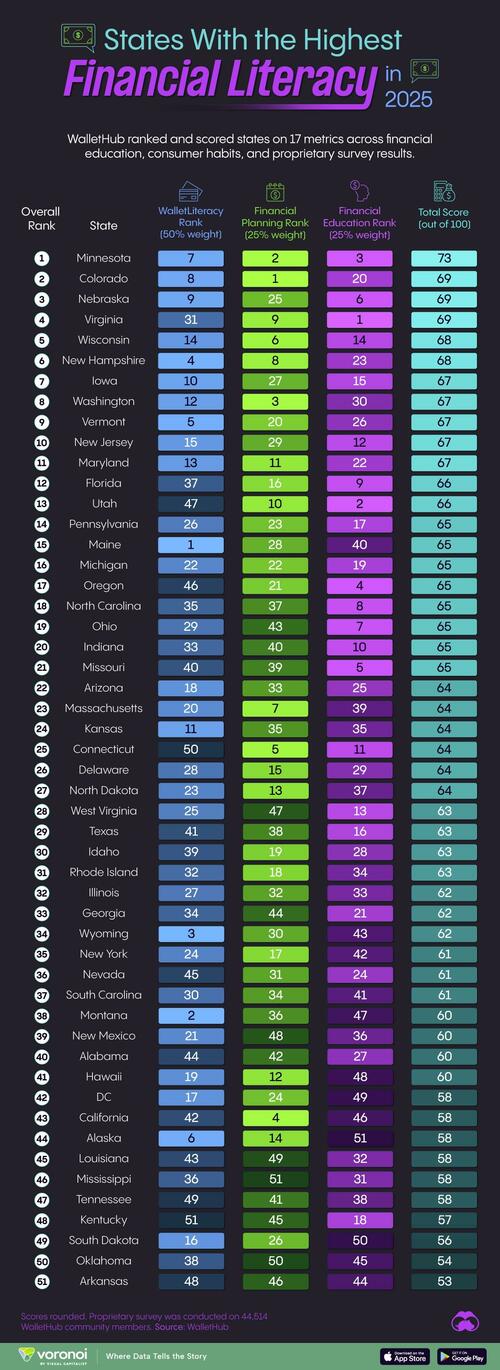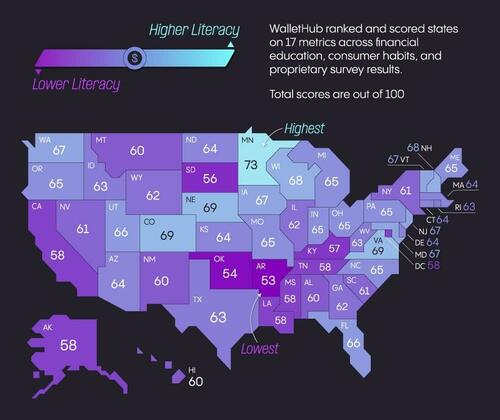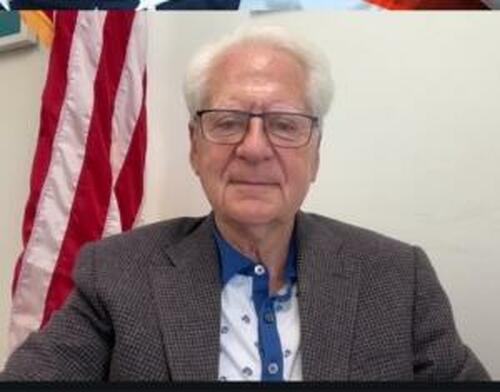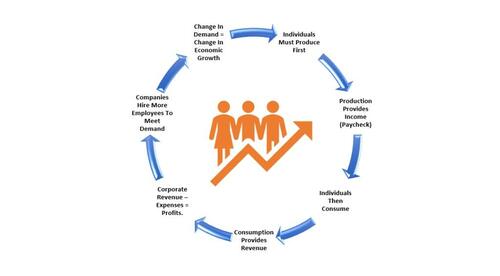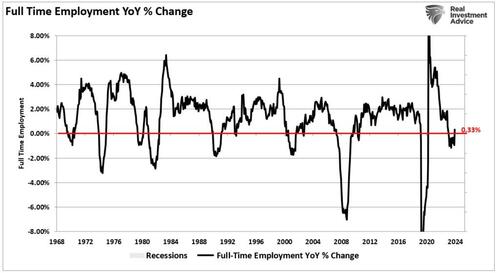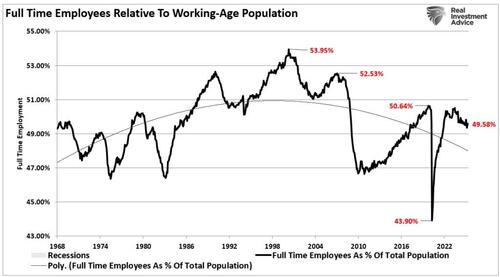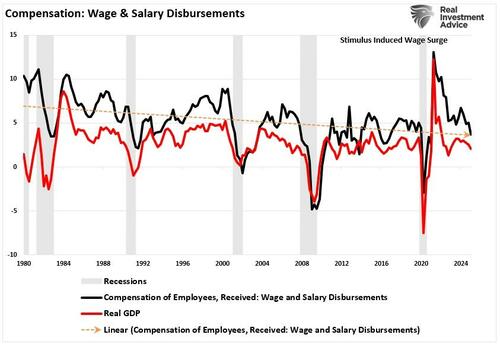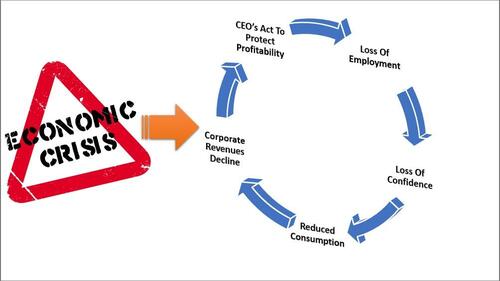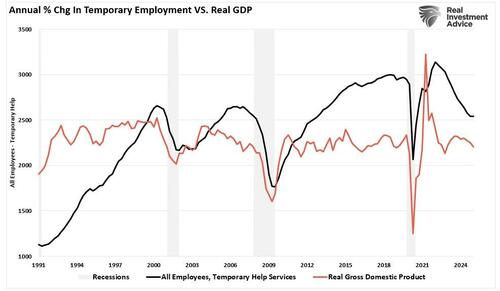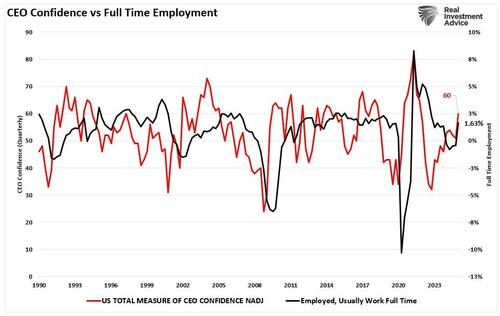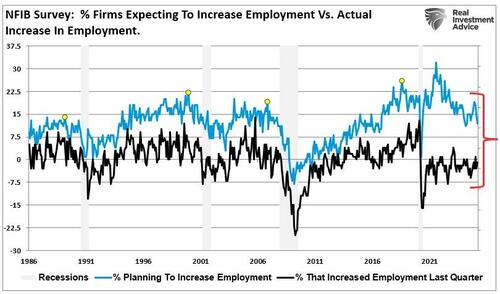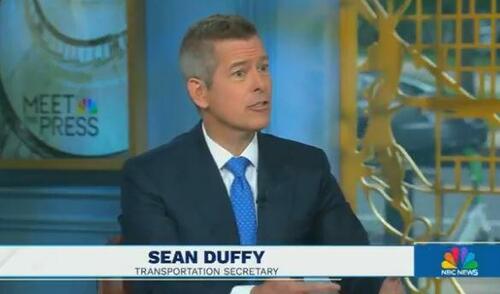Certainly, it is difficult to make the demands of the Gospel understandable to secularized people. But this pastoral difficulty must not lead to compromises with the truth.
Distinction Matter - Subscribed Feeds
-
Site: Fr. Z's BlogFrom a priest… QUAERITUR: I have not had time, and will probably not any time soon to go back to footage of previous last handful of Roman Pontiff to confirm, but I heard that apparently Pope Leo XIV when he … Read More →
-
Site: LES FEMMES - THE TRUTH
-
Site: Novus Motus LiturgicusThe Durandus Institute for Sacred Liturgy & Music is pleased to announce its first collaboration on a liturgical event in the Byzantine Rite. On Saturday, May 31 – the eve of the seventh Sunday of Pascha and the Sunday of the Fathers of the First Ecumenical Council – we will be praying a Great Vespers & Lytia at the Ukrainian Greek-Catholic church of St Nicholas in Philadelphia, in Gregory DiPippohttp://www.blogger.com/profile/13295638279418781125noreply@blogger.com0
-
Site: Ron Paul Institute for Peace And Prosperity
Cops enforce laws. On first impression that may seem a good thing as one considers long in place laws, such as against assault, murder, and theft, that can help protect individuals’ ability to live in peace. But, laws have proliferated over time in America so that cops are spending a significant portion of their effort enforcing laws against things like drugs and even speech — acting to restrain instead of protect the exercise of individual rights.
Coming with the expansion of laws has been the conversion, continuing during the Donald Trump administration, of police departments largely into effectively military forces with military-style practices and weapons more suited for fighting against an opposing military force than for serving and protecting the people in a community.
A demonstration of the extent of this conversion of police forces came up in recent oral argument at the United States Supreme Court for the case of Martin v. United States. There a lawyer for the US government argued, in the case concerning a wrong house being hit by a brutal Federal Bureau of Investigation (FBI) no-knock SWAT raid, that it is acceptable for police not to even check the house number out front before detonating an explosive in a house, knocking down a door, and rushing in guns drawn. Crazy but true. Read here a Friday Reason article by Billy Binion that includes an excerpt from the oral argument and some background details.
-
Site: Fr. Z's BlogFrom a reader… QUAERITUR: Our pastor had a rare situation with the election of the Pope. The white smoke went up, indicating that we had a new Pope, but before who the new Pope was announced, he had to go … Read More →
-
Site: Catholic ConclaveCathcon: Just goes to show how terrible the years following renunciation must have been for Pope Benedict.Monsignor Georg Gänswein: "The season of arbitrariness is over. The confused past must be overcome"Ratzinger's former prefect, now Nuncio to the Baltics. "The institutions of the Church are not a leprosy""A middle way between Pope Benedict XVI and Pope Francis? If we combine Catholic Conclavehttp://www.blogger.com/profile/06227218883606585321noreply@blogger.com0
-
Site: southern orders
Please note that Pope Leo’s cassock maintains that short sleeves that goes over the long sleeves of the cassock. Francis abandoned that look, which Benedict had recovered. His Holiness takes possession of the Apostolic Palace and apartment showing its wonderful papal chapel so unlike the Vatican Motel VI’s chapel.
The second video is the audience Pope Leo had with journalists.
-
Site: southern orders
I can remember when Francis was elected pope, very quickly the heterodox right starting panicking that Pope Francis was going to turn upside down the Church as Pope Benedict had led it. It started immediately when Pope Francis abandoned the tradition of the Mozzetta and papal stole and only put a stole on for his first blessing after he asked those before him to bless him. And then he immediately got rid of the stole. Those who love papal traditions and trappings that transcend the man who is elected, were aghast as they should have been.What happened 13 years ago is happening again today with the election of Pope Leo XIV. He does not disdain the trappings of the institutional papacy. The heterodox left is freaking out, not only over the Mozzetta and papal stole, which Leo wears so impeccably, but also because he now uses an upgraded vehicle for transportation and will live in the Apostolic Palace instead of the Vatican Motel VI.
Leo is also very clear. They know he will not have a magisterium of off-the-cuff homilies and interviews and act like a pop psychologist decrying the mental illness of backwards. The Vatican will NOT have to do damage control over some of the things that they had to do when Francis spoke.
There will be a solid papal magisterium as there has been with all other popes except Francis.
Pope Leo condemns liturgy as spectacle and superficial!
Finally, Pope Leo as a priest and bishop decried that over the last 60 years, the liturgy has been transformed or celebrated as a spectacle rather than as a Mystery. For him a spectacle is superficial and distracts from the true nature of the Liturgy as people discovering the Mystery of Christ, not technical spectacles.
I would suspect that Pope Leo appreciates the TLM for its superb enablement of priests and laity to experience the solid foundation of Jesus Christ in the Mystery of the Mass, not some kind of man made spectacle of light and thunder.
This is an example of superficial spectacle and entertainment that moves the Mass away from Christ and Mystery!:
-
Site: AsiaNews.itThe local government is asking the Legislative Council (which it controls) to approve a new regulation that would hand over jurisdiction to mainland China in "complex cases" involving foreign countries. The measure appears tailored to the case of Jimmy Lai. The "geopolitical situation" is cited as justification. It was opposition to extradition that sparked the pro-democracy protests in 2019.
-
Site: Mundabor's blogPope Leo XIV met the journalists that had participated in the Conclave and imparted his Apostolic Blessing. Francis had refused to do it, imparting a “silent” one, because some of them were not Catholics and some of them were atheists. In Francis’ own words: “Since many of you are not members of the Catholic Church, […]
-
Site: AsiaNews.itCare for creation and overcoming divisions were the themes at the centre of the Argentine pontiff's last apostolic journey in September last year. Already by name the successor draws the Church's attention to the 'new things' and the challenges of the present. The sacredness of life and the mission to build bridges in society.
-
Site: Mises InstituteThe modern state, unlike the medieval monarchy, does not merely tax to sustain itself or to defend the nation. It taxes to reshape society and to manage an increasingly restive population.
-
Site: AsiaNews.itDuring Chinese President Xi Jinping's three-day visit to Moscow, the "Power of Siberia-2" gas pipeline—vital to Russia's economy—was once again a topic of discussion. Beijing is already supporting Russia's expanding military production by supplying microelectronic components blocked by Western sanctions. The presence of Chinese soldiers in the parade before Lenin's mausoleum also reflects internal political considerations within China.
-
Site: Zero HedgeMinnesota Is The Most Financially Literate State In The USTyler Durden Mon, 05/12/2025 - 05:45
How well are Americans managing their money, and how does it vary between the states?
This financial literacy map, via Visual Capitalist's Pallavi Rao, attempts to answer both questions using 2025 data from WalletHub, a personal finance services company.
They ranked and scored states on three main benchmarks: financial education, financial planning (or consumer habits), and how Wallethub’s own users performed on their financial literacy survey.
ℹ️ These benchmarks are further subdivided into 17 metrics (credit score, savings, personal finance courses, etc.) and are weighted differently. Please read the source’s methodology section for a full breakdown.
The Most Financially Savvy U.S. State
Minnesota is the most financially literate U.S. state with 73 points, according to WalletHub’s latest analysis.
Here’s some sub indicators where Minnesota outperformed the rest of the country.
- High-schoolers must take at least one personal finance program.
- Only 15% of the surveyed Minnesotans spent more than they made—the lowest across all states.
- Highest median credit score in the country (751).
And here’s how each state scores out of 100. Figures are rounded.
Rank State State Code Total Score
(Out of 100) 1 Minnesota MN 73 2 Colorado CO 69 3 Nebraska NE 69 4 Virginia VA 69 5 Wisconsin WI 68 6 New Hampshire NH 68 7 Iowa IA 67 8 Washington WA 67 9 Vermont VT 67 10 New Jersey NJ 67 11 Maryland MD 67 12 Florida FL 66 13 Utah UT 66 14 Pennsylvania PA 65 15 Maine ME 65 16 Michigan MI 65 17 Oregon OR 65 18 North Carolina NC 65 19 Ohio OH 65 20 Indiana IN 65 21 Missouri MO 65 22 Arizona AZ 64 23 Massachusetts MA 64 24 Kansas KS 64 25 Connecticut CT 64 26 Delaware DE 64 27 North Dakota ND 64 28 West Virginia WV 63 29 Texas TX 63 30 Idaho ID 63 31 Rhode Island RI 63 32 Illinois IL 62 33 Georgia GA 62 34 Wyoming WY 62 35 New York NY 61 36 Nevada NV 61 37 South Carolina SC 61 38 Montana MT 60 39 New Mexico NM 60 40 Alabama AL 60 41 Hawaii HI 60 42 District of Columbia DC 58 43 California CA 58 44 Alaska AK 58 45 Louisiana LA 58 46 Mississippi MS 58 47 Tennessee TN 58 48 Kentucky KY 57 49 South Dakota SD 56 50 Oklahoma OK 54 51 Arkansas AR 53Meanwhile, Arkansas tested the worst, with 53 points. Its score is impacted by having the second-worst performance on WalletHub’s financial literacy survey.
And here’s each state’s rank within the three main benchmarks.
Rank State WalletLiteracy Rank
(50% Weight) Financial Planning
Rank (25% Weight) Financial Knowledge
Rank (25% Weight) 1 Minnesota 7 2 3 2 Colorado 8 1 20 3 Nebraska 9 25 6 4 Virginia 31 9 1 5 Wisconsin 14 6 14 6 New Hampshire 4 8 23 7 Iowa 10 27 15 8 Washington 12 3 30 9 Vermont 5 20 26 10 New Jersey 15 29 12 11 Maryland 13 11 22 12 Florida 37 16 9 13 Utah 47 10 2 14 Pennsylvania 26 23 17 15 Maine 1 28 40 16 Michigan 22 22 19 17 Oregon 46 21 4 18 North Carolina 35 37 8 19 Ohio 29 43 7 20 Indiana 33 40 10 21 Missouri 40 39 5 22 Arizona 18 33 25 23 Massachusetts 20 7 39 24 Kansas 11 35 35 25 Connecticut 50 5 11 26 Delaware 28 15 29 27 North Dakota 23 13 37 28 West Virginia 25 47 13 29 Texas 41 38 16 30 Idaho 39 19 28 31 Rhode Island 32 18 34 32 Illinois 27 32 33 33 Georgia 34 44 21 34 Wyoming 3 30 43 35 New York 24 17 42 36 Nevada 45 31 24 37 South Carolina 30 34 41 38 Montana 2 36 47 39 New Mexico 21 48 36 40 Alabama 44 42 27 41 Hawaii 19 12 48 42 District of Columbia 17 24 49 43 California 42 4 46 44 Alaska 6 14 51 45 Louisiana 43 49 32 46 Mississippi 36 51 31 47 Tennessee 49 41 38 48 Kentucky 51 45 18 49 South Dakota 16 26 50 50 Oklahoma 38 50 45 51 Arkansas 48 46 44There’s some further insights to explain some noticeable geographic trends.
- Colorado and Nebraska also require personal finance education in high school.
- Kentucky, Oklahoma, and Arkansas have the lowest share of adults with emergency cash.
- A higher share of Southern state residents borrow from non-bank lenders, affecting their financial planning score.
The Overlooked Part of Financial Literacy: Managing Debt
While investing in the markets is all the rage—particularly with the rise of no-fee platforms—WalletHub’s benchmarks prioritize an often overlooked part of money management: debt.
America’s credit card debt collectively crossed $1 trillion in 2023, and it’s only been growing since.
On average, American households have about $5,000 in outstanding credit card balances, which can take anywhere between one to two years to pay off depending on monthly incomes.
Of course, managing expenditures to avoid or reduce debt has been particularly difficult in the multiple years of post-pandemic inflation.
Need more money management insights about the United States? Check out: America’s Average Bank Account Balance, by State for a quick overview.
-
Site: Real Investment Advice
Tweets like the one we share below allude that the Fed is doing stealth QE, despite the fact that they publicly claim to be conducting QT. Given the importance of the Fed balance sheet, let's dive into the stealth QE accusation and uncover the facts.
The graphic within the Tweet contains the official Treasury Department announcement of last Tuesday’s ten-year Treasury auction. The red arrow highlights that the Fed, via its SOMA account, bought $14.8 billion of the auction notes. While the Fed is buying, leading to stealth QE claims, they are not adding to their balance sheet. Under the current QT regime, the Fed targets a $5 billion monthly decline in its Treasury securities holdings. For example, about $76 billion of its bonds will mature in May. Therefore, if $76 billion naturally leaves the balance sheet but the goal is for a $5 billion decline, they must buy $71 billion throughout the month.
Another bit of false information we hear is that Fed purchases are making Treasury auctions appear better than they are. This, like stealth QE, is patently false. The size of the auctions is announced in advance. After the auction buyers and yield are determined, the Fed buys additional bonds from the Treasury at the predetermined auction yield. Thus, the Fed's purchase of bonds does not affect the auction statistics. The auction shown below was for $42 billion. The relevant auction statistics are based on the $42 billion and the type of buyers.

What To Watch Today
Earnings

Economy
- No economic data of consequence
Market Trading Update
Last week, we discussed that while the market improved sharply, the underlying economic data continues to decline steadily. However, given that the data was not recessionary, the market rallied and took out some key resistance levels. To wit:
“This past week, two reports confirmed the economy is slowing. First, there was the weak GDP report, which showed growth of roughly one percent, after discounting the impact of the trade deficit. Secondly, while the employment number was higher than expected, job growth also slowed. However, those reports should have tempered market enthusiasm as they reduced hopes for Fed rate cuts. However, the market pushed higher as investors raced to jump back into “risk assets” as the market cleared initial resistance at the 20-DMA and reversed all of the ‘Liberation Day” losses.‘”
The market paused its advance before the Fed meeting on Wednesday, which was remarkably uneventful. The Fed held rates steady as expected and did not provide much guidance regarding its forecast for future rate cuts. However, on Thursday, the Trump administration discussed its first “trade deal” with the UK. Notably, the US has a trade surplus with the UK, making negotiating a trade deal easier. Nonetheless, announcing a long-awaited agreement gave the market hope that more deals eventually will follow. Unfortunately, other trade deals with actual “trade deficit” countries may be tougher and take much longer to negotiate.
Technically, the market is beginning to repair much of the damage from the “Liberation Day” tariff announcements. However, on Thursday, we made the case that we are still tracing out the 2022 market analogy. As shown in the weekly chart below, in 2022, the market sold off and triggered a weekly moving-average crossover in early March. Immediately following that selloff, the market rallied back to those longer-term moving averages and briefly broke above. That “bear market rally,” sucked investors back into the market, just to “rug pull” from beneath them. Such is how correctional markets work.
You will notice that the recent selloff has also triggered that same moving average crossover, and immediately coincided with a reflexive rally. The market has broken above the first moving average, challenging the second as investors and the media are increasingly bullish on stocks. Will the market “rug pull” on investors once again? I don’t know. However, as stated, if we are in a more protracted market correction, the risk is elevated, and we could see another retracement to support before this correction is complete.

Reasons The Correction Could Be Over, Or Not
It is always difficult to say whether this is a “bear market” rally while you are in the midst of it. In hindsight, these things are easy to identify, and investors have plenty of reasons to play the “could’ve should’ve” game. However, some valid arguments exist about why the recent correction was just that, and may now be over.
- Q1 earnings were above average, which is boosting investor confidence, particularly in the “Mag 7” and related AI stories.
- Investor sentiment is improving from extremely low levels and is not overly bullish.
- Treasury yields are coming down, along with inflationary pressures.
- Uncertainty around tariffs, the main driver of the correction, is rapidly becoming less of a threat.
- Recession risks have fallen sharply with the latest economic data.
- Market valuations have corrected somewhat in recent weeks.
Of course, there are reasons for concern that should also not be dismissed.
- Economic data and consumer confidence are getting weaker.
- Political policy uncertainty remains elevated.
- Despite the recent rally, the market still suffers significant technical damage.
- Investors were not prepared for the recent magnitude of the correction, providing potentially significant sellers wanting to get out. (Trapped longs)
- Monetary policy uncertainty remains elevated.
- Valuations, while reduced, remain well elevated from the long-term median and average.
With balanced risks, investors will likely benefit by remaining cautious and managing risk exposures until a more bullish path is exposed.

The Week Ahead
Inflation data highlights the week, with CPI on Tuesday and PPI on Thursday. The current estimate is for CPI to increase by 0.3% after falling by 0.1% last month. While the updated inflation data will be well followed, it may be too early to see the impact of tariffs. Accordingly, the market may discount any good inflation news. In addition to PPI, retail sales, and a speech by Jerome Powell are also on the calendar for Thursday. Moreover, several Fed members will opine on Fed policy this week.
Employment Data Confirms The Economy Is Slowing
While coming in much stronger than expected, the latest employment data confirmed what we already suspected: the economy is slowing. The reason the employment data is so important is that without employment growth, the economy stalls. It takes, on average, about 200,000 jobs each month to keep up with population growth, which ultimately keeps the economy growing. That is because, as discussed in last week’s #BullBearReport, the consumer comprises about 70% of economic growth. To wit:
“There is currently no evidence that the economy is slipping into a recession. However, if you want to know if an economic decline will evolve into a recession, there is one key factor to consider: consumer spending. Consumer spending comprises nearly 70% of the GDP calculation, and everything else, from business investment to imports and exports, is a function of the consumer’s “demand.” In other words, if the consumer is slowing down or contracting spending, businesses will not “invest” in expansion projects, increasing employment, or buying more products for resale. That relationship is shown in the chart below, which compares PCE to employment and private investment.”

However, most crucially, consumers can not consume without producing something first. Production must come first to generate the income needed for that consumption. The cycle is displayed below.

Here is the most critical point. Not all jobs are equal. READ MORE...
Tweet of the Day

“Want to achieve better long-term success in managing your portfolio? Here are our 15-trading rules for managing market risks.”
Please subscribe to the daily commentary to receive these updates every morning before the opening bell.
If you found this blog useful, please send it to someone else, share it on social media, or contact us to set up a meeting.
The post Stealth QE Or Routine QT? Unpacking Recent Fed Activity appeared first on RIA.
-
Site: Real Investment Advice
Assessing a bear market rally proves challenging when you experience it firsthand. It is only in hindsight that the complete picture reveals itself to investors. Of course, after a bear market rally, investors tend to review their investments and speculate on what they should have done differently.
Retail investors seem to view the recent sharp correction as possibly finished. As I noted last week on X, despite the near 20% correction in the markets, retail investors piled into US equities at a record pace. Of course, historically, retail investors were considered a contrarian indicator, but in recent years, particularly post-pandemic, they have been aggressive buyers of any dip in the market. Of course, after 15 years of monetary and fiscal interventions to stave off deeper bear markets, their "buy the dip" mentality is unsurprising.

Before we go further, we should discuss what a "bear market rally" is to frame better our discussion about what the possibilities and probabilities of what happens next.
Bear Market Rally Or Just A Correction?
A bear market rally represents a short-term increase in stock prices that emerges while the market is in a downward trend. Such price rallies bring forth positive expectations because markets experience significant upward movements throughout several weeks or months. These rallies do not indicate any actual market recovery. They serve as brief interruptions before the dominant downward trend continues. The general drivers of these bear market rallies generally result from investors buying back their short positions, market participants feeling increasingly optimistic, and technical indicators showing oversold conditions. As such, they increase risk assets.
However, the fundamental problems that initiated the previous corrective phase are still present. Such factors generally range from declining earnings to monetary condition changes, rising recession risk, economic policy uncertainty, or a combination that persists despite temporary price increases. Reality eventually returns to market fundamentals, which makes the rally disappear before the bearish trend reemerges. A good example was 2022, where investors experienced several bear market rallies amid the Federal Reserve increasing interest rates while Russia invaded Ukraine. Each time the bear market rally occurred, it sucked bullish investors back into the market and left them stranded.

Conversely, a correction, which occurs during an upward market trend and represents a decline of 10% or more, differs from a bear market rally. Generally, a correction is a short, singular down cycle within a rising trend. These events typically stem from short-term market anxieties, including overbought positions, geopolitical disturbances, and policy modifications. Yet, they do not shift the future direction of the market. The market stabilizes after a correction because positive economic trends and favorable earnings support its upward movement. The fundamental distinction rests in the environment and period of the market situation. The basic trend stays solid during a bull market correction, and investors will eventually experience positive outcomes from new price peaks. A good example of corrections within a bullish trend is evident in the 2023-2024 market. Despite a bank crisis, concerns of AI, or leveraged blowups, the market recovered quickly and moved to new highs.

The risk for investors is the real-time determination of what type of corrective action we are in. Investors who reenter risk assets during a bear market rally face additional market declines since the primary downward trend continues after the brief recovery. Investors who buy the dip during a corrective phase in a bull market benefit.
One grievance I often receive from readers is that I don't tell you the answer. The reason is that neither I nor anyone else can predict the future. All I can do for you is address the possibilities and probabilities of what can happen so you can manage your investment risk accordingly.
With that said, let's dig into both cases.

The Bull Case For A Correction
The bulls can certainly make a case for continuing the bull market that began in October 2022.
First, Q1 earnings delivered above-average results overall but were primarily driven by major technology companies and the AI-powered "Magnificent 7." That cohort continues to provide the cornerstone for investor optimism. However, even though the largest capitalization-weighted companies delivered the bulk of earnings, the proportion of companies beating estimates remained well above the long-term average of 74%.

Secondly, financial conditions refer to current conditions across financial markets that can affect the dynamics of the economy. Those factors include improved interest rate levels, U.S. Treasury yields, credit risk spreads, equity valuations, and currency strength, which are supportive of the financial markets.

Furthermore, sentiment among both professional and retail investors has rebounded from its profoundly negative state, which is bringing buyers back into the market. Notably, that sentiment remains far from optimistic, providing further support for asset prices. The chart below shows the Z-score (standard deviation) of the net bullish sentiment of both retail and professional investors. Profoundly negative readings are often coincident with market lows.

Overall, investors maintain a favorable position toward the market because the current conditions provide sufficient space for constructive improvements without leading to excessive speculation. The recent market decline resulting from tariff concerns has proven more significant than expected. However, it is worth noting that spikes in policy uncertainty tend to mark the bottom of market corrections rather than the beginning. Given that policy uncertainty around tariffs and other political statements about trade barriers has reduced in intensity lately, this could become supportive for the market.

Are these factors a guarantee that the recent market correction is over? No. But historically, depressed sentiment, high levels of policy uncertainty, and easing financial conditions have often been the contrarian setup that investors should be looking for.
But let's review the case for a bear market rally.

Why This Could Still Be A Bear Market Rally
Multiple indicators indicate this could be a bear market rally. Since markets are forward-looking, investors focus on future earnings growth to justify paying higher valuation multiples today. The problem for the market currently is that economic data, particularly the key ingredient of employment, which drives consumption, is softening. As we discussed in this past weekend's #BullBearReport such is critical given that employment and consumption drive earnings growth.
“Since 1947, earnings per share have grown at 7.7% annually, while the economy expanded by 6.40% annually. That close relationship in growth rates should be logical, particularly given the significant role that consumer spending has in the GDP equation.” – Market Forecasts Are Very Bullish

“Since, consumer spending comprises nearly 70% of the GDP calculation, everything else, from business investment to imports and exports, is a function of the consumer’s “demand.” In other words, if the consumer is slowing down or contracting spending, businesses will not 'invest' in expansion projects, increasing employment, or buying more products for resale. That relationship is shown in the chart below, which compares PCE to jobs and private investment.”

Economic data is softening as post-COVID monetary supports fade. As such, consumer confidence indicators show a downward trend, especially regarding expectations about the future. The chart below shows the difference between current and future expectations. Historically, very low readings are consistent with more protracted bear markets and deeper corrections.

Lastly, the market's technical backdrop remains a near-term concern. While momentum and relative strength have improved, those factors are beginning to wane, suggesting buyers may be reaching near-term exhaustion. Secondly, volume has been weak during this corrective process. If this were just a short-term correction, we would have liked to see much stronger buying coming into the market. Finally, support is just below current market levels, which may limit near-term declines. However, there is formidable overhead resistance just above. The 100 and 200-DMA and the January lows will likely prove challenging for the markets to crack without a pullback to support first.

As noted, numerous investors failed to predict how quickly or dramatically the market decline would be. As such, these "trapped longs" will likely become sellers as soon as this rally falters. While our 2022 example of bear market rallies set new lows, this does not mean we will repeat that process. A pullback to support could hold if economic data stabilizes, trade deals progress, or the Federal Reserve cuts rates.
Conclusion
So, what does this mean for investors? With no clear indication of the market's next move, investors will likely benefit from managing risk exposures. Moreover, investors must avoid making absolute decisions because both sides present compelling evidence. More often than not, markets resolve themselves in a more bullish fashion. Therefore, adopting a more bearish view has a risk associated with it. The current market rally does not necessarily negate the risk of this being a bear market rally. Nor does it signify the end of the correction.
The essential question is whether market risks are appropriately incorporated into prices and if upcoming returns justify additional market participation. For now, caution is prudent. The current macroeconomic environment shows gradual improvement without being strong. While Q1 earnings reports showed strength, the most notable risk to investors is the drastic cuts to forward earnings. Such certainly does not portray economic optimism.

Investors can do a few things to navigate the market's next move.
- Focus on maintaining portfolio equilibrium instead of following recent market gains.
- Review your current exposure positions for alignment with current risk patterns.
- Reassess position sizes, tighten stops, and avoid concentration in crowded trades.
- Risk management can be achieved by combining cash reserves with portfolio hedging strategies.
The trick to navigating markets is not to try to “time” the market. That is impossible. Successful long-term management is understanding when “enough is enough” and being willing to take profits and protect your gains. That is our situation for many stocks after the robust rally from the recent lows.
With markets in a corrective process and trading below long-term moving averages, there is an opportunity to rebalance risk and reduce portfolio volatility.
Unfortunately, many investors will opt to “hope” for further gains, but will sell at lower levels if the correction continues.
Trade accordingly.
The post A Bear Market Rally? appeared first on RIA.
-
Site: Crisis Magazine

As there is only one Our Lady, all her authentic revelations, judiciously put together, show a clear, coherent, common message with a genuine narrative, giving us a preview of the future. The most well-known message came from Our Lady of Fatima, where she called everyone back to repentance, prayer, and sacrifice in order to avoid conditional horrors that would otherwise affect the Church. Sadly…
-
Site: AsiaNews.itToday's news: Hamas announces it will release an Israeli-American hostage;In South Korea, the presidential election campaign begins ahead of the 3 June vote;The ceasefire between India and Pakistan holds, with both sides now facing decisions about their next moves;The Taliban ban chess and dismiss hundreds of university professors.
-
Site: Crisis Magazine

While the pro-abortion activists at the heretical organization Catholics for Choice continue to openly attack the Vatican and its status as a permanent observer at the United Nations, faithful Catholics finally have an ally with the Trump administration in the fight to obstruct the anti-life goals of the population-control zealots and gender ideologues at the United Nations.
-
Site: Zero Hedge"It's The Worst Scandal Ever" - Judicial Watch Founder Warns 'America Is Under Siege'Tyler Durden Mon, 05/12/2025 - 05:00
Via Greg Hunter’s USAWatchdog.com,
Renowned attorney Larry Klayman predicted on USAWatchdog.com that there would be full-blown, legal civil war happening in the court system. He also predicted that violence from the “rabid left” would not only increase but explode.
Klayman, founder of Judicial Watch and now Freedom Watch USA, says there are now more than 233 federal court cases trying to stop or delay President Trump and his Administration.
Klayman is here to update us on what is going on with the struggle America is having with the Deep State trying desperately to hold on to power. Let’s start with Joe Biden’s appearance last week on ABC’s “The View,” where he looked confused and incompetent. Can all of Biden’s last-minute pardons of criminals and J6 members who destroyed evidence be enforced or are they null and void as President Trump has declared? Klayman says,
“They are null and void and so is every other thing that was allegedly signed by him (Biden). He couldn’t even remember what he signed. . . . This is more than a scandal. It’s the worst scandal ever. Let me tell you something, Biden has not been abused as an elderly person. He abused the American people, and it’s much more than abuse. Biden committed treason.”
What about suspending “habeas corpus” as President Trump is thinking about doing to more quickly deport millions of illegal aliens?
Klayman says,
“He can do that in dire times, times of war. We are, in effect, in a war. We had drug traffickers, human traffickers, sex traffickers and terrorists running across our border in mass, over 10 million in the Biden Administration alone and many before that. So, yes, it’s a war-time situation, and he (President Trump) can suspend it. . . .Just get them the heck out of here. They are here illegally. They have no right to be here. The President should just ignore these edicts by these San Francisco judges and other judges . . . and do what he needs to do, and they can’t do anything.
You know the judiciary has no ability to enforce any ruling. It’s only the Executive Branch, President Trump’s branch that he sit’s over, can enforce the rule of law.
This President has been sued thus far . . . in places like San Francisco, Chicago, Boston, Seattle, Portland and other places where they know they are going to get a Leftist judge. Federal judges are supposed to be assigned randomly.
It’s like Wheel of Fortune, but that really does not happen. . . . They actually steer these cases. . . . We need to prosecute these judges and set up the Department of Judicial and Legal Accountability and work with President Trump.
I hope he will appoint me to head that with others that will come on board because we need some strong leadership right now because he’s sinking. He (Trump) has been enjoined 70% to 80% of the time in every Executive Order that he has issued.
This last one said Trump has no control over his departments anymore. There was a temporary restraining order that says you can’t cut workforce; you can’t do anything.”
Why all the attacks on President Trump? Klayman says
"They are attacking him because they hate him. . . . they are attacking him, and it’s all orchestrated. Washington is one giant, excuse the French, circle jerk. It’s a club.”
Larry Klayman is representing conservative reporter Laura Loomer against Bill Maher and HBO.
They are being sued by Loomer for falsely claiming she slept with President Trump. Klayman just deposed Maher and wants to release the video deposition. Maher’s lawyers have so far blocked that. Klayman says, “They are fighting tooth and nail to keep the video of Bill Maher secret so it can never be seen..."
"Look at the hypocrisy. Laura Loomer gets defamed by Bill Maher, and the court has already denied a motion to dismiss . . . She gets smeared all over the world, defamed that she had sex with the President behind the back of Melania. . . . Loomer’s reputation gets harmed, and this harms her financially . . . You can smear a woman and . . . . If President Clinton can have his deposition released, who is Bill Maher that he should be protected? Maher gave money to Kamela Harris as a political candidate. That’s why Maher went after Loomer, because she was a way to get to Trump.”
In closing, Klayman has a warning:
“Pro Hamas demonstrators are busting up campuses threatening Jews and Christians, we see that. We see Hakeem Jefferies the Minority Leader in the House, and Ilhan Omar, Rashita Tlaib, AOC and Bernie Sanders whipping up violence along with Jasmine Crockett, and they are calling for violence.”
Are we headed for a civil war?
Klaman says, “I believe we are.”
There is more in the 56-minute interview.
Join Greg Hunter of USAWatchdog.com as he goes One-on-One with renowned lawyer and government corruption fighter, Larry Klayman, founder of FreedomWatchUSA.org, as he rolls out a new organization to help Trump and the DOJ with his newly created Department of Judicial and Legal Accountability (DOLA) for 5.10.25.
-
Site: Mises InstituteA Gallup survey taken in March this year found only 46% of Americans expressed support for Israel (the lowest level in 25 years of Gallup's annual tracking).
-
Site: Mundabor's blogTo every thing there is a season, and a time to every purpose under the heaven: A time to be born, and a time to die; a time to plant, and a time to pluck up that which is planted; A time to kill, and a time to heal; a time to break down, and a time to build […]
-
Site: Mises InstituteThese subsidies exemplify crony capitalism. The Austrian School of economics defines any subsidy as government intervention in the functioning of the economy.
-
Site: The Orthosphere
LOL. I was using Grok as a research assistant just now, asking what I had written about something or other since I started writing online in 2009.
Grok thinks I’m dead!
Grok thinks I’m dead, *even though I’m the one asking Grok for resources about my past online writing!*
Caveat inquisitor!
On the other hand, Grok did just give me quite an accurate recapitulation of my conversations with Zippy about usury, back in the day. It even got usury right (i.e., *not* high interest rates, but rather, mutuum contracts).
NB: I am *not* suicidal. Nor do I think I matter enough for The Powers That Be to want to expend resources on rubbing me out (not yet, at least, although I’m sure I am on their list (as are you, you Nazi Orthosphere reader)).
This whole thing is just silly.
I mean, sure, any search engine trained on the products of fallible humans is bound to generate fallacious results from time to time. But still. Really? Grok can see perfectly well that I posted here just the other day. Sheesh.
Just be super careful out there and triple check all the citations you get from AI.
Honestly, it looks to me as though AI is bound to drive the greater part of human interaction down to the level of the high school sophomore. Not that there is anything wrong with high school sophomores; I’m more or less myself just one such, writ experienced.
Still. Really?
-
Site: The Unz ReviewDemocrat politicians led a break-in at a New Jersey ICE facility. In Worcester, Massachusetts, Democrat city council member Etel Haxhiaj led an assault on local police and federal officers in an effort to prevent apprehension by ICE of a violent immigrant-invader that the Biden scum permitted to illegally enter America in August, 2022. Local police...
-
Site: The Unz ReviewPresident Trump’s return to the Middle East this week, the first since his first-term 2017 visit, will take place amidst great turmoil. It is a region that bears little resemblance to the Middle East of 2017 and it appears, at least from media reporting this past week, that the Trump Administration has some understanding of...
-
Site: AntiWar.comOn Monday, April 7, 2025, the opening brief in Kinnucan v. NSA et al. (no. 24-7642) was filed in the 9th US Circuit Court of Appeals. The appeal seeks to reverse a US District Court decision that a 57-year-old report in the possession of the National Security Agency (NSA) is a Congressional record not subject … Continue reading "New Appeals Briefs Filed in USS Liberty FOIA Lawsuit"
-
Site: The Unz ReviewThe world just witnesses a shockingly one-sided air war between Pakistan and India last week. Pakistan air force, equipped with Chinese weapon systems, took down a large number of India air combat assets while suffering zero loss. The air battle featured Chinese-made J-10C fighters, PL-15 air to air missiles, HQ-9 air defense system, and ZDK-03...
-
Site: AntiWar.comThe situation in Gaza today starkly highlights Israeli exceptionalism. Israel is employing the starvation of two million Palestinians in the blockaded and devastated Gaza Strip as a tactic to extract political concessions from Palestinian groups operating there. On April 23, the United Nations Office for the Coordination of Humanitarian Affairs (OCHA) described the current humanitarian … Continue reading "Famine in Gaza: Will We Continue To Watch as Gaza Starves to Death?"
-
Site: The Unz Review‘White farmers are being brutally killed in South Africa’ warned President Donald this week amid all the uproar and craziness over tariffs, world trade and kickoff of a campaign to force Big Pharma to lower its prices to consumers. Why would Trump target South Africa? First, because South Africa dared accuse Israel’s far right government...
-
Site: The Unz ReviewWhen politicians fight wars to truce or ceasefire, there’s a mistake they often make. That is to give up escalation dominance, escalation control, to the adversary so that he gains confidence that when he is ready, he will resume fighting in a much stronger position than he was at the truce. In short, ceasefire doesn’t...
-
Site: The Unz ReviewThe dramatic ongoing crackdown against free speech and academic freedom by the Trump Administration has been very widely condemned as "McCarthyism" by its numerous public critics. Although these current proposals vastly exceeded any of the anti-Communist measures advocated by the junior senator from Wisconsin during the early 1950s, this controversy prompted me to investigate that...
-
Site: The Unz ReviewPM Keir Starmer said immigrant-invaders are turning Britain into an “island of strangers.” He blames the Conservatives for betraying the British people for cheap foreign labour that is “pulling our country apart.” Unlimited immigration has inflicted “incalculable damage” on Great Britain. Starmer promises to reduce annual inflows by 100,000. His program seems to be to...
-
Site: The Unz ReviewWhy would a relatively senior Labour Cabinet Minister – Lucy Powell, the Leader of the House of Commons – refer to one of the, worst scandals in British history, an effective war crime against the British people by foreign invaders, as blowing “that little trumpet” and as a “dog whistle”? Even in the heat of...
-
Site: AntiWar.comWe often hear U.S. and NATO spokesmen claim that they believe in a rules-based international order. They don’t. The United States and its NATO allies have stressed repeatedly that Russia’s use of force to seize portions of Ukraine is reprehensible. They were emphatic on that point in 2014 when the Kremlin responded to the West’s … Continue reading "Turkey: A Rogue US Ally’s Territorial Conquests"
-
Site: Zero HedgeWho Won The Latest Indo-Pak Conflict?Tyler Durden Sun, 05/11/2025 - 23:35
Authored by Andrew Korybko via substack,
Opinions are mixed about who came out on top in the latest Indo-Pak conflict, but one thing is for certain, and it’s that India’s new doctrine is the lasting takeaway.
According to reports, India will regard all future acts of terrorism as acts of war by Pakistan, which will result in cross-border strikes.
That might not deter Pakistan, whose military leadership relies on the unresolved Kashmir Conflict to legitimize its outsized influence, but it could still make them think twice about orchestrating future attacks.
Moreover, the Indus Waters Treaty remains suspended despite the fragile ceasefire/”understanding” between them, which collectively contributes to the new reality in South Asia. Reports also suggest that it was Pakistan, not India, which asked the US to diplomatically intervene in the latest conflict. About that, India denied that any mediation took place despite the US’ claims, but the US probably passed along messages from Pakistan to India on Islamabad’s behalf during talks between their officials.
CNN claimed that Vance called Modi after receiving “alarming intelligence”, which hints that Pakistan told the US that it might use of nuclear weapons in desperation, likely due to India bombing multiple bases across the country. If that’s indeed what happened, then it would imply that Pakistan believed that was losing, thus lending credence to perceptions that India got the best of it. After all, the aforesaid strikes weren’t intercepted, which shows that India achieved escalatory dominance over Pakistan.
Although some Pakistani drones and missiles hit targets inside of India, Russia’s S-400s were praised by national media for neutralizing many of the incoming attacks. Likewise, the jointly produced BrahMos supersonic cruise missiles were used in India’s successful attacks against Pakistani bases, thus proving that Russian military equipment is truly some of the best in the world. By contrast, Pakistan’s mostly Chinese equipment fell short of some observers’ lofty expectations, which reflects negatively on both.
Nevertheless, many in the Alt-Media Community – including some top “Non-Russian Pro-Russians” – insist that Pakistan defeated India, though there are reasons to suspect that they don’t actually believe this but are driven by ulterior motives in claiming otherwise. Most of these same figures are known for their support of Palestine and/or China, and given that India is close to Israel and at odds with China, supporting Pakistan is “ideologically consistent” with their views and precludes accusations of hypocrisy.
No matter how reliable their takes on Ukraine, Palestine, and whatever else might be, their views on the latest Indo-Pak conflict should therefore be taken with lots of salt. This is important to keep in mind since Putin and Modi “emphasised the need to uncompromisingly fight terrorism in all its forms” during their call last week, which isn’t reflected by these top “Non-Russian Pro-Russians” who present themselves as interpreters of Russian foreign policy.
Their support of Pakistan over India contradicts Russian interests.
All told, while opinions are mixed about who came out on top in the latest Indo-Pak conflict, India arguably won seeing as how it punished Pakistan for the Pahalgam terrorist attack by bombing multiple bases, the Indus Waters Treaty remains suspended, and a new military doctrine has entered into effect. Pakistan achieved no comparable outcomes despite its supporters’ claims. Even though it lost, Pakistan might not have learned its lesson, so a re-eruption of hostilities at some future time can’t be ruled out.
-
Site: Zero HedgeGoogle To Pay $1.375 Billion In Texas Data Privacy SettlementTyler Durden Sun, 05/11/2025 - 23:00
Google has agreed to pay $1.375 billion to settle two lawsuits brought by Texas over alleged violations of residents’ data privacy rights, marking one of the largest such settlements in U.S. history and escalating state-level scrutiny of Big Tech.
The settlement, announced Friday by Texas Attorney General Ken Paxton, resolves claims that the tech giant unlawfully tracked users’ locations, searches, and biometric data—despite user settings designed to protect such information.
“This $1.375 billion settlement is a major win for Texans’ privacy and tells companies that they will pay for abusing our trust,” said Paxton in a statement. “For years, Google secretly tracked people’s movements, private searches, and even their voiceprints and facial geometry through their products and services. I fought back and won.”
The deal, which Paxton said dwarfs any prior state settlement with Google over data privacy, stems from two lawsuits filed in 2022. The allegations focused on the Chrome browser’s Incognito Mode, location tracking practices in Google Maps, and facial recognition data captured through Google Photos.
Friday’s agreement follows a similarly sized $1.4 billion settlement Paxton reached with Meta last year over claims involving unauthorized use of biometric data from Facebook and Instagram users.
While Texas hailed the outcome as a landmark victory, Google emphasized that the agreement does not include any admission of wrongdoing or changes to its current business practices.
“This settles a raft of old claims, many of which have already been resolved elsewhere, concerning product policies we have long since changed,” said Google spokesman José Castañeda. “We are pleased to put them behind us, and we will continue to build robust privacy controls into our services.”
Castañeda noted that Google had already announced or implemented policy updates in response to privacy concerns, independent of the Texas litigation.
The case is the latest in a string of state-level actions challenging how tech companies collect and monetize user data, particularly in the absence of sweeping federal privacy legislation. Paxton and other attorneys general have increasingly positioned themselves as watchdogs of digital privacy amid bipartisan calls for stronger oversight of the technology sector.
For Google, which is already facing federal antitrust trials and regulatory investigations across multiple jurisdictions, the Texas settlement adds another chapter to a growing legal ledger. But for state officials, it sends a broader signal: Tech platforms may operate globally, but they are not immune from local laws - or local penalties.
With the ink now dry on two multibillion-dollar privacy deals in under a year, Texas is asserting a new kind of digital jurisdiction - one that could shape the future of how personal data is protected in the U.S.
-
Site: The Remnant Newspaper
-
Site: The Remnant Newspaper - Remnant ArticlesIn this RTV report from Rome, Michael J. Matt speaks to the following topics with respect to the election of the new Pope:
-
Site: Public Discourse
My American grandmother, who raised seven children in Floral Park, New York, loved to tell people with a big smile, “Kids come with instructions!” My Cuban grandmother, who raised fourteen children—first in Havana and then in the US—told me when I asked her if she always wanted fourteen kids, “Oh no! I wanted twelve. But God answered my prayers and even gave me two more!” Their words and their witness communicated a mentality of abundance: God provided them with everything they needed to raise their children, including many siblings for their children.
As a young woman in my twenties with multiple degrees from Ivy League universities, I believed that I needed to plan my career and family together, optimizing both according to my preferences. As I entered my thirties, my career ascended, but my dreams of family life faded; I was always the bridesmaid but never the bride.
But thanks to my two grandmothers, who raised large, loving families, I was always surrounded by aunts, uncles, cousins, and my own three brothers along with their children. If I were single and childless—not by choice but by circumstance—I would fully embrace being an older cousin, an aunt, and a great babysitter to my friend’s kids.
I never missed a chance to cuddle a newborn baby. When a colleague from China gave birth, I rushed to her house to meet the baby. She had struggled with infertility for years and could not have been more joyful to have a baby. Yet, practically in tears, she admitted that she had never held a baby until she had one of her own. She was afraid when he cried and didn’t know how to hold him.
I simply grabbed the baby, rocked him at my hip, and sang to him to soothe him. Then I wrapped him in a blanket, fed him a bottle, and burped him. Soon he was fast asleep in my arms, and I smiled, relishing the heavenly delight of feeling a newborn baby breathe.
“How did you learn to do that?” my friend asked in amazement.
My friend had the gift of a child, but she needed to learn from someone how to nurture her baby. Her question made me realize that I had taken for granted my upbringing in a large family where everyone shares in the joys and burdens of raising many children.
In February 2025, I sat down at the New York Encounter with two demographers, W. Bradford Wilcox of the University of Virginia and Nicholas Eberstadt of the American Enterprise Institute. They shared startling statistics showing that my Chinese friend, a woman with one child, and I, a woman with no biological children, represent the new global norm.
What drives the global demographic shift toward women choosing not to have children or having only one child? What are the social implications of a world with fewer children? What wisdom can we learn from past generations with larger families that might encourage both women and men to appreciate the joys of family life, even as children challenge our plans in ways that are both perplexing and beautiful?
During our conversation, Eberstadt presented a sobering view of global demographics (that is, if you care about the future of the human population). We have surpassed the so-called demographic transition that was expected to yield just enough children to replace our population (two children per woman). Notably, this demographic decline is not an exclusive phenomenon of North America and Europe.
Eberstadt explained, for example, that the birthrate (i.e., average number of children per woman) is 0.55 in Seoul, Korea. Perhaps more surprisingly, the birth rate is only 1.2 in Istanbul, Turkey, and 1.2 in Calcutta, India. Three-quarters of the world’s population lives in countries where the population is declining. There’s one regional exception to these trends—the African continent. However, Eberstadt emphasized that even Africa’s population trends are right behind the rest of the globe; that is, Africa, too, will soon have a shrinking population.
Global depopulation is not entirely a new phenomenon; however, what’s new is that it seems to be by choice, Eberstadt said. Previous instances of global depopulation were caused by war, famine, or natural disasters. Yet today, many areas experiencing population decline have known peace and prosperity, which, at least in theory, should alleviate concerns about raising children.
Why, then, are people not having children? In the United States, Wilcox explained, many young adults, both men and women, seem to prioritize careers over family. According to Wilcox’s predictions, one-third of young Americans will remain unmarried. He countered the idea that the childless are happier than parents. As it turns out, the freedom to pursue our self-interest without the constraints of marriage and children does not lead to happiness. On average, Wilcox noted, his research shows married people with kids are happier than their single and childless counterparts.
As he elaborates in his 2024 book, Get Married: Why Americans Must Defy the Elites, Forge Strong Families, and Save Civilization, the American heart is closing. The great paradox is that many young people have ambitious plans and high ideals for marriage and family, yet they postpone those dreams to first pursue a career, travel, and accumulate wealth. The result is that many people simply end up never married and lonely, with enough money in the bank to remain entertained, but never truly happy.
Both Eberstadt and Wilcox emphasized that the decision to have children or not changes the entire society around you. When large families were common, society was oriented toward raising the next generation: churches, schools, and families collaborated to support one another. Everyone (married or not) was, in some form or other, passing on wisdom and nurturing the next generation. No one ever chided either of my grandmothers for wasting the world’s resources on their children.
Deep inside most men and women, the desire for children may indeed exist. However, the unintended consequence of public policy efforts and social pressure to restrict family size to two children per woman has been a significant loss of social learning regarding childrearing. The majority of the world’s population today does not grow up around siblings or younger children, often experiencing social isolation and fearing the burdens of raising a child of their own.
Eberstadt and Wilcox pointed out that, due to personal choices and social changes—including the rise of the smartphone—many people seek meaning solely through achievement or online entertainment. Intimate relationships recede, people turn inward, new marriages have become rare events, and bringing new life into the world is viewed as detrimental to the environment.
As I earned a Ph.D. in sociology at Princeton University just one year after Wilcox, I recognized that by the late 1990s, almost no one in the population demographics guild still believed the simplistic narrative that population growth causes global poverty, environmental degradation, and general human misery.
As a Catholic woman, I believed my happiness lay in a vocation of marriage and motherhood. Yet, when I called off my plans for marriage in my late thirties—because my former fiancé decided he did not want the responsibility of raising children—it seemed beyond my control that I would become one of the statistics of a childless, successful career woman. What was I to do? How was I to live a happy life? It didn’t help when the advice I sometimes got was that single people, and married but infertile couples c, are left doomed by our so-called “choices” to be childless and unhappy.
I learned that people with large families (and today, a family of more than one child could be called large) longed to be surrounded by community. So, I sought out friends with kids—babysitting, going to kids’ movies, and enjoying countless kids’ birthday parties and baptisms. I didn’t need instructions—I just stepped in, held babies, played with toddlers, and relished the hugs and smiles I received. When, at age forty-eight, I married a wonderful man, the fact that I had learned to build intimate relationships with others’ children prepared me to embrace becoming a stepmother and supportive wife.
In today’s world, however, many people need guidance on how to raise children. On Tammy Peterson’s podcast recently, I heard a single woman in her twenties lament how hard it is to come from a small family and no church community because it is difficult to find mentors whose lives center on faith and family. Holidays are particularly lonely for single people, and many of them have never experienced a large family meal. An older woman on the podcast wisely encouraged all Christian families to invite single people over for Christmas.
Religious individuals are an exception to the broad trend of fewer marriages and smaller families. Wilcox, who is Catholic, has five adopted children and has three biological children. Large families often look to each other for support. But it’s important for large families to welcome single people into their homes, as the Wilcoxes did for me. Large families that trust in God’s providence witness to the fact that the suffering and sacrifice of raising children are nothing compared to the joy of a child’s gift of unconditional love.
In a world where many people are advised to weigh the benefits of marriage and having children, being around kids teaches us to open our hearts to a child’s self-giving love that is unconditional. Even amid chaos, a child will often stop, look you in the eyes, and say, “I love you.” That unconditional “I love you” means something like, “It makes me happy to be with you just because you are my mom or dad.” Or in my case, it means “I love you just because you choose to play with me and pay attention to me.” Children easily pour love into anyone around them, instantly expanding our hearts. If we stop being around children, it’s no wonder the American heart is closing.
Raising children comes with its burdens. However, it’s the most beautiful thing we can do because children bring love into even the most challenging situations. Despite the dread many adults may carry in their hearts about the future, children see the world as it truly is: full of beauty and mystery. A beautiful, mysterious world means the future is full of possibilities.
Ultimately, I answered the panel’s question, “Why have children?” by sharing the answer from a graduate student I teach. Carrying her second child and trying to finish her master’s degree far away from her biological family (other than her husband and two-year-old daughter), she told me, “When you are expecting a child, you are aware that inside you a mystery is growing that will one day come out of you. Nothing is more exciting.”
My student’s heart is wide open. She dreams of teaching orphans in Africa, where she is from. She knows our society ignores so-called unwanted children who are just as capable of giving and receiving love as anyone else. She knows God’s love can heal abandoned children.
Throughout my life, I have held many babies, although none was my own. In doing so, I’ve come to understand the sentiment expressed by novelist Marilynne Robinson: to gaze into the eyes of a newborn is the closest we come to seeing the face of God.
A newborn baby is utterly dependent on parents and community, yet children are the greatest natural resource in the world. Each new life that enters the world represents boundless opportunities. Each child I’ve held and each student I’ve mentored gives me hope for the future. Through loving others’ children as if they were my own, a childless woman like me has rejoiced abundantly by encountering the image of God alive in others.
What do we sacrifice when we tell young people today to define happiness through something lifeless: a car, a trip, a degree, an abundant bank account? In reality, what greater joy is there than to embrace the mystery of a new life? What greater attraction, what greater reason to live, and what greater motivation to serve than to raise the next generation?
Happiness is not an achievement; it’s a gift. Children are a blessing. My closing message to the panel’s audience was to forget your smartphones, ambitions, and quibbles with your neighbors. Take the risk, open your heart, and the boundless love of a child will move you to tears.
-
Site: Unam Sanctam CatholicamRemember back after the 2013 conclave when papolaters were predicting something called the "Francis Effect"? The Francis Effect was supposed to be a worldwide Catholic renewal brought about in the wake of Jorge Bergoglio's accession to the chair of Peter. All sorts of nonsense was predicted: a boom in vocations, lapsed Catholics returning to the faith, global missionary successes, mass conversions—all flowing from the luminous example proferred by His Humbleness.Of course, this was all nonsense. The real Francis Effect ended being something quite different. Plunging vocations. Belief destroyed. The faithful confused. Churches shuttered. Liturgy wars, financial malfeasance, and administrative chaos. Lío within, lío without.
The disaster of the Franciscan pontificate was a lesson in how reckless it is to make such wild predictions about something like the rise of a new pontiff—especially one a incompetent as Francis. Yet papolaters in 2025 have not learned, for we are already seeing wild prognostications about the pontificate of Leo XIV, who, at the time of writing, is about three days into his reign. And people are again predicting what amounts to a "Leo Effect" soon to be expected.
The vision emerging around the "Leo Effect" seems to relate to the pontiff's ancitipated influence within the American church in particular. Things I am hearing is that Pope Leo's influence is about to cause:- The American church is about to have a boom in priestly and religious vocations.
- Pope Leo is going to issue a new condemnation of Americanism.
- We are about to undergo a renaissance of American Catholicism.
I heard a homily today wherein a priest was educating the congregation on "Pope Leo's spirituality and vision for the Church" based on some torturouesly exegeted passages from Leo's first homily. I mean, it would be one thing if he had said, "I've been following Robert Francis Prevost for years and am extremely familiar with his life and spirituality." But no...just another guy who had no idea who Prevost was until Thursday but is a sudden expert. He had no clue about Pope Leo's spirituality let alone his "vision for the Church." What ridiculous hubris it is that makes everyone want to feel like they have some insightful take on what is or what will be?
I sincerely hope many of these things do indeed come to pass. I know nothing about Pope Leo, but I will say that he seems like a geuinely good man—a person who loves Christ and is possessed of authentic humility (unlike his predecessor Pope Humble the Merciful). I can also say that I felt sincere paternal affection when Leo stepped out onto the loggia. I know my feelings don't matter, but I felt a distinctively different sentiment when Francis stepped out in 2013, something more akin to dread or foreboding. I documented these feelings here, which were shared by countless other Catholics at the time (I encourage you to read the comments). I never thought Francis was good news, not even once—and yes, of course in my mind, I gave him the benefit of the doubt as pertains to my judgment, but as pertains to my intuition, I simply never had a good feeling. And I had no clue who Bergoglio was either; Bergoglio and Prevost were equal unknowns. Yet the sentiment is distinctively different this time around; I have cautious optimism, and the few things I have seen so far give me hope. But I really people would stop with the dumb prognostications, the rank papolatry, and the reckless inferences. These sorts of things tend to age very, very poorly. -
Site: Zero HedgeHamas To Release American-Israeli Hostage As Goodwill Gesture To TrumpTyler Durden Sun, 05/11/2025 - 17:10
Israeli media is reporting Sunday that Israeli-American hostage Edan Alexander could be released by Hamas as early as Monday, after direct engagement between Hamas and Washington.
"After Hamas confirms that it will release Israeli hostage Edan Alexander, which it is reportedly doing as a gesture of goodwill to US President Donald Trump during his visit to the region this week, Israeli journalist Barak Ravid says US special envoy Steve Witkoff will arrive in Israel tomorrow to facilitate the process," The Times of Israel reports.
Witkoff will "finalize the details ahead of the release of Edan Alexander, according to a source familiar with the matter," Ravid wrote on X.
 Donald Trump had previously been urged to use his influence to free Edan Alexander and the other hostages while meeting with victims' families, via The Telegraph
Donald Trump had previously been urged to use his influence to free Edan Alexander and the other hostages while meeting with victims' families, via The Telegraph
Trump will travel to the region, stopping in the Gulf countries of Saudi Arabia, Qatar, and United Arab Emirates. Surprisingly, and apparently without official Israeli knowledge or input in behind-the-scenes US-Hamas diplomatic engagement on the issue, Hamas has formally confirmed the release is coming, but without saying exactly when.
Hamas announced Sunday that the decision to release Alexander comes after recent talks with US officials and "intensified efforts to achieve a ceasefire, open border crossings, and allow humanitarian aid into the Gaza Strip.”
Importantly, the Palestinian group which has warred against Israeli going back to the terror attack of Oct.7, 2023, has also said it is ready to resume intensified negotiations.
Hamas says it is ready to establish a mutually "agreed prisoner exchange, and enable Gaza to be administered by an independent professional authority."
President Trump could be readying a big announcement on the prospect of Gaza peace as he gets ready to depart for the region in Air Force One.
All of this, interestingly enough, comes amid unverified reports of a new rift between Israeli Prime Minister Benjamin Netanyahu and Trump. While US Ambassador to Israel Mike Huckabee has denied the accuracy of the claims, the below widely circulated last week:
President Trump has “cut contact” with Netanyahu, slamming the Israeli PM and his allies for acting “arrogant” and trying to push him around. Trump reportedly feels disrespected and manipulated by Netanyahu.
It’s been months since the last hostage exchange, with no new meaningful progress from this Administration to bring them all home.
— Rep Josh Gottheimer (@RepJoshG) May 11, 2025
Ahead of @POTUS Trump’s trip to the Middle East, I’m urging him to prioritize the release of 21-year-old Edan Alexander, the last surviving American… pic.twitter.com/JnGqqNtw0JThis new breakthrough where Hamas is willing to release the Israeli-American suggests that Israel may have been cut out of US-Palestinian talks.
If true, this would be a huge blow to Netanyahu. He's facing growing domestic pushback, and accusations that he is intentionally prolonging the war, at the expense of the safety of the remaining living hostages.
* * *
Just a few hours before cutoff!
-
Site: Catholic ConclavePrevost visited Bolivia several times and wore a poncho and ch'ullo.The parish priest of the Gran Poder Church remembers him as a humble man. He danced morenada and tobas and enjoyed Bolivian food.Robert Prevost, elected Pope Leo XIV this Thursday, visited Bolivia several times in his capacity as a representative of the Order of Saint Augustine and even wore the traditional poncho and Catholic Conclavehttp://www.blogger.com/profile/06227218883606585321noreply@blogger.com0
-
Site: Zero HedgeEmployment Data Confirms Economy Is SlowingTyler Durden Sun, 05/11/2025 - 16:35
Authored by Lance Roberts via RealInvestmentAdvice.com,
While coming in much stronger than expected, the latest employment data confirmed what we already suspected: the economy is slowing. The reason the employment data is so important is that without employment growth, the economy stalls. It takes, on average, about 200,000 jobs each month to keep up with population growth, which ultimately keeps the economy growing. That is because, as discussed in last week’s #BullBearReport, the consumer comprises about 70% of economic growth. To wit:
“There is currently no evidence that the economy is slipping into a recession. However, if you want to know if an economic decline will evolve into a recession, there is one key factor to consider: consumer spending. Consumer spending comprises nearly 70% of the GDP calculation, and everything else, from business investment to imports and exports, is a function of the consumer’s “demand.” In other words, if the consumer is slowing down or contracting spending, businesses will not “invest” in expansion projects, increasing employment, or buying more products for resale. That relationship is shown in the chart below, which compares PCE to employment and private investment.”
However, most crucially, consumers can not consume without producing something first. Production must come first to generate the income needed for that consumption. The cycle is displayed below.
Here is the most critical point. Not all jobs are equal.
“For a household to consume at an economically sustainable rate, such requires full-time employment. These jobs provide higher wages, benefits, and health insurance to support a family. Part-time jobs do not.”
While the media touts the ‘strong employment reports,’ such is mostly the recovery of jobs lost during the economic shutdown. However, the reality is that the full-time employment rate is falling sharply. Historically, when the rate of change in full-time employment dropped below zero, the economy entered a recession.
Notably, given the surge in immigration into the U.S. over the last few years, the all-important ratio of those employed full-time relative to the population has dropped sharply. As noted, given that full-time employment provides the resources for excess consumption, that ratio should increase for the economy to continue growing strongly. However, full-time employment has decreased since the turn of the century as automation, technology, and offshoring have risen. While President Biden recently touted strong employment growth in his SOTU address, full-time employment as a percentage of the working-age population failed to recover to pre-pandemic levels.
Notably, sharp downturns in full-time employment have been coincident with recessionary onsets.
No Recession, But Slower Growth Coming
The latest employment data put to rest recession concerns, at least for now. Employment growth remains strong enough to support economic growth and quell concerns that CEOs are withdrawing from the job creation process. However, compensation continues to decline as economic demand slows.
As is always the case, as the economy slows down, employers begin to change the most costly aspect of any business – employment. Cutting full-time jobs is the most efficient way to protect earnings and profitability. However, employers tend to hang on to employees as long as possible, as good employees are expensive to train and hard to replace. Eventually, if the demand falls too much, full-time employees are sacrificed to protect profits. As such, a reasonably predictable cycle continues until exhaustion is reached.
While we are seeing declines in full-time employment as the economy slows, we are now also seeing cuts in temporary help, which, as shown, is consistent with slowing growth. The reason is that cutting temporary employment is the first step by business owners to reduce employment costs while hanging on to full-time, and mostly crucial, employees. However, as noted above, once temporary workers are exhausted, the next step will ultimately be full-time employees.
The latest employment data did not provide much support for the “recession” crowd in 2025. As such, Wall Street analysts are quickly reversing their recession calls for this year, and are becoming more focused on slowing economic growth. However, that assessment can certainly change promptly if personal consumption expenditures take a turn for the worse. As noted above, nearly 70% of economic growth is derived from consumption; therefore, if consumption declines, employment falls, reducing consumption and further employment declines. When it accelerates, that cycle is the foundation for recession outcomes.
Indicators We Are Watching
As noted, while the employment data is weak, there are certainly indicators we are watching closely to confirm whether “job loss” is accelerating. First, we pay attention to the Conference Board’s measure of CEO confidence. Since the October 2022 lows, CEO confidence has continued to improve, and as of Q1, it rose to 60 from 51 in Q4 of 2024. That confidence increased full-time employment as the outlook for economic growth was improving heading into 2025. However, this is a lagging indicator, and the results of the Q1 survey were taken in February before the market decline and tariff announcements. Later this month, we will get an update to see if sentiment has changed, which could give us clues about future employment reports.
The second indicator we are watching is the NFIB small business confidence index. Specically,.it is their “plans” to increase employment versus what they do. Notably, employment by small businesses, roughly 50% of the total employment in the U.S., has remained stagnant since the pandemic. However, small business owners were very optimistic about hiring post-pandemic, expecting sharp improvements in sales. However, that optimism is fading quickly.
The reason is that, as discussed at the opening of this discussion, employment is a function of the demand for goods and services that businesses supply. As shown, expectations for sales surged following President Trump’s election, but given that actual sales have failed to materialize, that optimism is fading rather quickly. Expectations for business owners are one thing, but without actual increases in sales, which drive revenue, there is little reason to increase full-time employment, which is why it has remained stuck at lower levels since 2020.
Conclusion
Given the importance of consumption in the economy and that employment (production) must come first in the cycle, attention to employment data, particularly full-time employment, is crucial to determining economic risk. The risk of a recession remains very low; however, that can change if something causes consumption to contract quickly. Aside from an unexpected, exogenous impact, investors should expect economic growth to continue to slowly weaken to a longer-term trend slightly less than 2% annually. Unfortunately, while not recessionary, that growth rate will make it hard for corporate profitability to remain at record levels.
Eventually, a valuation adjustment in the financial markets will reflect the reality of a slow-growth economy. However, that isn’t today. However, the risk of a decade of low returns as markets normalize for a slow-growth economy is steadily increasing.
Just something to consider.
-
Site: Fr. Z's BlogToday, the 11th of the month saw the sunrise on the 3rd day of a new pontificate at 5:52. It duly set at 20:22. The Ave Maria Bell should ring at 20:45. A new cycle as of today. Welcome registrants: … Read More →
-
Site: Catholic ConclaveCatholic Conclavehttp://www.blogger.com/profile/06227218883606585321noreply@blogger.com0
-
Site: Zero HedgeTeenagers With Mental Health Disorders Spend An Extra Hour On Social MediaTyler Durden Sun, 05/11/2025 - 15:25
Authored by George Citroner via The Epoch Times (emphasis ours),
Adolescents diagnosed with mental health conditions spend nearly an hour more on social media daily than their peers and are twice as likely to compare themselves negatively to others online, according to new research.
 DimaBerlin/Shutterstock
DimaBerlin/Shutterstock
The study, involving 3,340 adolescents in the UK, suggests troubling patterns for teens with anxiety and depression, who report having less control over their social media use and greater mood fluctuations depending on the comments and likes they receive on social media.
“Our study doesn’t establish a causal link, but it does show that young people with mental health conditions use social media differently than young people without a condition,” said lead author Luisa Fassi, a researcher at the University of Cambridge’s Medical Research Council Cognition and Brain Sciences Unit, in a press statement.
She said the differences between children with and without mental health conditions may stem from the way these conditions influence how adolescents interact with online platforms—or possibly from social media use contributing to their symptoms. “At this stage, we can’t say which comes first—only that these differences exist,” Fassi added.
Differences by Condition Type
The study, recently published in Nature Human Behavior, analyzed data from a 2017 survey of 3,340 UK adolescents between the ages of 11 and 19. Professional clinicians interviewed the teenagers and, in some cases, their parents and teachers.
Researchers distinguished between conditions affecting internal feelings—such as anxiety, depression, and post-traumatic stress disorder—and those involving outward behaviors like attention-deficit/hyperactivity disorder (ADHD), oppositional defiant disorder (ODD), and conduct disorder.
Teens with conditions affecting internal feelings, like depression and anxiety, showed the most significant differences in social media behavior.
Social comparison—meaning comparing themselves to others online—was twice as prevalent among adolescents with anxiety and depression compared to those without mental health conditions: 48 percent and 24 percent, respectively.
These teens were also significantly more likely to report mood changes in response to social media feedback—28 percent versus 13 percent—and felt less in control of their time spent on these platforms.
This pattern was not seen in children with ADHD, ODD, and conduct disorders.
Dr. Ritu Goel, a board-certified integrative psychiatrist specializing in child, adolescent, and adult mental health, told The Epoch Times that the pattern makes clinical sense.
Teens dealing with anxiety or depression are often more emotionally sensitive and vulnerable to criticism or rejection, she said. “Social media amplifies these feelings because it’s filled with unrealistic portrayals of happiness and success. They might feel left out or not good enough, significantly deepening their emotional struggles.”
The researchers also found that teens with diagnosed conditions spend approximately 50 minutes more on social media compared to those without.
Beyond time spent online, all adolescents with mental health conditions also tended to report greater dissatisfaction with the number of online friends they had.
“Social media platforms assign a concrete number to friendships, making social comparisons more conspicuous. For young people struggling with mental health conditions, this may increase existing feelings of rejection or inadequacy,” Fassi said.
She noted that friendships play a key role in shaping adolescents’ sense of identity.
Why Social Media May Worsen Symptoms
Teens with mental health conditions often use social media in ways that can reinforce or worsen their symptoms, said Sanam Hafeez, a neuropsychologist and director of Comprehend the Mind in New York.
When people passively scroll through social media, they encounter idealized images that lead to negative social comparisons.
“Many people develop an obsession with checking likes, comments, or messages, which leads them to base their self-esteem on online reactions,” Hafeez said. “People who post online to confirm their worth experience disappointment when their posts don’t receive the positive feedback they expected.”
The constant exposure to idealized images, peer conflicts, and subtle exclusion can heighten feelings of anxiety and rejection. Nighttime social media use can also disrupt sleep, which plays a key role in emotional health. Together, these patterns can deepen the cycle of depression and anxiety.
Interestingly, aside from the time spent on social media, researchers found few differences in social media behavior among teens with externalizing conditions like ADHD or conduct disorders.
How Parents and Doctors Can Help
Parents and mental health professionals should collaborate to guide teens toward healthier social media use, Goel said.
“Mental health professionals can teach teens critical thinking skills about online content and emotional self-regulation strategies,” she said. “Parents can support these efforts by actively monitoring social media usage, setting clear boundaries for online and offline activities, ensuring a balanced daily routine, and promoting open conversations about online experiences.”
Goel emphasized that encouraging regular offline interactions and hobbies can further help teens build resilience and maintain a healthy emotional balance.
Hafeez recommended establishing tech-free times and encouraging offline social connections, emphasizing that teens should “feel supported rather than controlled,” making it easier for them to develop lasting, healthy digital habits.
* * *
Just a few hours before cutoff!
-
Site: Zero Hedge"Glitches In System": Duffy Calls For Urgent Flight Slowdown After Newark OutagesTyler Durden Sun, 05/11/2025 - 14:50
Transportation Secretary Sean Duffy appeared on NBC News' Meet the Press on Sunday morning, emphasizing the Trump administration's urgent push to modernize the nation's outdated airspace communications infrastructure.
Secretary Duffy cited recent outages at Newark Liberty International Airport (EWR). He described the situation as deeply concerning and stressed the need to replace the legacy system, which still relies on copper wiring, not fiber optics.
"We're having these glitches in the system," he said, adding, "So we slow it down and keep people safe. That's what we do."
Secretary Duffy said air traffic is being deliberately slowed and may last for "several weeks" at EWR following a series of radar outages, including the latest incident on Sunday morning. A separate outage on Friday had already prompted a temporary ground stop at the airport.
Bloomberg adds more color about today's ground stop at EWR:
On Sunday, an FAA equipment failure prompted a temporary ground stop at Newark. Controllers briefly slowed arriving and departing flights due to a "telecommunications issue" at a Philadelphia air traffic control center that was implicated in last week's 90-second outage, according to the FAA's website.
"I'm concerned about the whole airspace," Secretary Duffy said, pointing out much of the "equipment that we use, much of it we can't buy parts for new. We have to go on eBay and buy parts if one part goes down. You're dealing with really old equipment."
The FAA's outdated and deteriorating infrastructure was well known during the Biden-Harris regime, yet little was done to address the looming crisis. Instead, former Transportation Secretary Pete Buttigieg prioritized woke initiatives—such as addressing so-called 'racist' infrastructure—over urgently needed modernization efforts of the nation's air traffic systems.
Whether this reflects mismanagement or intentional negligence remains up for debate—but after four years of woke warriors in the White House, the consequences are undeniable: the entire airspace network is in crisis.
An urgent fix is needed, and that's precisely what Secretary Duffy and his team are now racing to deliver.
Duffy on the air traffic control system: "The lights are blinking, the sirens are turning ... what you see in Newark is gonna happen in other places across the country."
— Aaron Rupar (@atrupar) May 11, 2025
Good luck, air travelers! pic.twitter.com/8woxmSYzvoNationwide Problem
Twice in two weeks, air traffic controllers at Newark Liberty International Airport lost all communication with aircraft - brief breakdowns that halted flights, triggered mass delays, and revived deep-seated concerns about the frailty of America’s air navigation infrastructure.
 The air traffic control tower at Newark Liberty International Airport again lost radar access early Friday. A similar incident occurred on April 28. Photo by Bryan Smith/ZUMA Press Wire
The air traffic control tower at Newark Liberty International Airport again lost radar access early Friday. A similar incident occurred on April 28. Photo by Bryan Smith/ZUMA Press Wire
No lives were lost, but for 90 seconds on April 28 - and again during a radar outage Friday - controllers at one of the nation’s busiest airports were effectively flying blind. The incidents rattled controllers, pushed already strained staffing to a breaking point, and highlighted what aviation leaders call a system overdue for a fundamental overhaul.
"There is a shortage of controllers nationwide, but not to the degree it’s occurring at Newark," said Jeff Guzzetti, a former FAA and NTSB investigator. "Newark has always been the worst in terms of air traffic staffing and modernizing its equipment."
New Jersey Governor Phil Murphy cited "decades of underinvestment," and Senate Majority Leader Chuck Schumer called the FAA "really a mess." The Transportation Department’s inspector general reported that 20 of the 26 most critical U.S. airports fall below the minimum staffing threshold for controllers, The Guardian reports. At Newark, some controllers who say they're traumatized by the latest breakdown, have taken leave—exacerbating already severe shortages.
The Trump administration responded Thursday with a sweeping modernization proposal. Secretary of Transportation Sean Duffy unveiled a plan to replace "antiquated telecommunications" with fiber, wireless, and satellite systems at more than 4,600 sites nationwide. "We are blessed to have a president who actually loves to build and knows how to build," Duffy said.
The plan was met with cautious optimism. Airlines and the air traffic controllers’ union endorsed the initiative, while the Modern Skies Coalition, a group of industry stakeholders, said it was encouraged by the department’s prioritization of safety. Yet some aviation experts questioned whether this plan will succeed where previous efforts have failed.
Robert W Mann Jr, an aviation industry analyst, said that for 40 years there have been FAA reauthorizations approved by Congress, but they haven’t fixed the problems. “Unless you do it right, it doesn’t make a difference what you spend,” he said. “You won’t have solved the root causes.”
Nonetheless, Mann said he remained confident about airline safety. He said: “There’s a primacy in this business. Whether you’re working at airlines or the FAA, safety is the first thing.”
Mann said that days when an airport faces severe understaffing of air traffic controllers or a crush of airplanes eager to take off as bad weather lifts, there will often be delays to ensure safety. “I’m not worried about safety,” Mann said, “but I might be worried that my flight will be four hours’ late.” -Guardian
Thursday’s announcement did not include a price tag, though the House Transportation Committee estimates a full system overhaul would cost at least $12.5 billion. Duffy acknowledged it could run higher.
Beyond the hardware, the human element is equally strained. The National Air Traffic Controllers Association says the U.S. needs more than 14,300 fully certified controllers. Today, the system has fewer than 10,800, with over 2,000 trainees still working toward full certification - a process that can take up to three years at high-volume airports like JFK and Newark.
Aging Infrastructure
The system’s shortfall dates back more than four decades. "The natural rhythm of the system broke down and we never fully recovered," said Georgetown labor historian Joseph McCartin, referencing President Ronald Reagan’s 1981 mass firing of striking controllers. "We’ve improved over time, but the FAA still has grave difficulty staffing facilities."
Guzzetti noted that the FAA still uses outdated software and facilities reliant on copper wire and even floppy disks. "It’s all coming to a head now," he said. A 2023 Government Accountability Office report warned that 51 of the FAA’s 138 ATC systems are unsustainable.
Meanwhile, a tragic January crash involving a commercial jet and army helicopter near Washington National Airport, which killed 67 people, remains under investigation. President Trump drew sharp criticism for blaming the accident on DEI policies before findings were released. On May 1, another army helicopter forced two commercial jets to abort landings at Reagan.
Despite this troubling backdrop, Mann expressed confidence in the industry’s safety culture. "I’m not worried about safety," he said, "but I might be worried that my flight will be four hours’ late."
Flight attendants’ union president Sara Nelson praised the dedication of frontline workers. "They should be commended for working in a system that’s crumbling," she said. "They’re like the nurses during Covid."
Duffy’s plan also includes incentives aimed at alleviating workforce shortages, including $5,000 bonuses for recruits who complete initial training. But industry officials stress that appropriations from Congress will be key.
"I hate to say we’re a canary in the coalmine," said Nelson, "but what happened in Newark is a sign of what will come in other airports if we don’t get the budget we need."
-
Site: Zero HedgeSupreme Court Justice Sotomayor Asks Lawyers To 'Stand Up' And 'Fight'Tyler Durden Sun, 05/11/2025 - 14:15
Authored by Matthew Vadum via The Epoch Times,
Supreme Court Justice Sonia Sotomayor told a lawyers’ conference that amid escalating criticism in the nation of some federal judges, lawyers need to “stand up” and “fight this fight.”
Sotomayor made the comments during an on-stage conversation on May 8 at an American Bar Association conference at the Smithsonian Museum of African American History and Culture in Washington.
The remarks by Sotomayor came after President Donald Trump, members of his administration, and Republicans in Congress have repeatedly criticized court rulings in recent months that have blocked or delayed the president’s agenda. Trump and some lawmakers have accused some judges of overstepping their authority through such rulings and called for them to be impeached.
Several federal judges have said the Trump administration has not complied with various court orders on immigration enforcement, federal spending, the firing of government employees, and foreign aid. The administration denies that it disobeyed the orders.
Sotomayor did not identify Trump or other officeholders who have criticized judges’ rulings by name.
“Our job is to stand up for people who can’t do it themselves. And our job is to be the champion of lost causes,” said the associate justice who joined the Supreme Court in 2009 after being nominated by President Barack Obama.
“But right now, we can’t lose the battles we are facing. And we need trained and passionate and committed lawyers to fight this fight.”
“With all the uncertainty that exists at this moment, this is our time to stand up and be heard. For me, being here with you is an act of solidarity,” Sotomayor added.
Sotomayor also praised “diversity,” which she said “is important for its own sake because it inspires everyone to believe that it’s possible for them to be in a position to help others.”
“I am more grateful that in my role as a public servant, I can continue to serve all communities and represent America as the very best version of itself,” she said.
Sotomayor’s comments came after two of her colleagues on the high court had also recently made public statements directed at the criticism of judges.
On May 7, Chief Justice John Roberts said an independent judiciary was needed to check the power of the president and Congress.
Roberts did not mention Trump or other officeholders by name during his comments that came during a visit to his birthplace of Buffalo, New York.
Judicial independence is “the only real political-science innovation in our Constitution,” said Roberts, who became chief justice in 2005 after being nominated by President George W. Bush.
In the Constitution, “the judiciary is a co-equal branch of government, separate from the others, with the authority to interpret the Constitution as law and strike down ... acts of Congress or acts of the president,” he said.
“And that innovation doesn’t work if ... the judiciary is not independent. Its job is to ... check the excesses of Congress or of the executive, and that does require a degree of independence.”
Roberts also said, “impeachment is not how you register disagreement with [judicial] decisions.”
“That’s what we’re there for,” he said, in reference to the appeals process.
On May 1, Justice Ketanji Brown Jackson said that recent criticisms of judges are “attacks on our democracy.”
Jackson was apparently commenting on Trump’s rhetorical barrages against some judges, although she did not specifically mention the president during her speech and instead spoke about “the elephant in the room.”
“The attacks are not random. They seem designed to intimidate those of us who serve in this critical capacity,” Jackson said at a judicial conference in Puerto Rico.
“The threats and harassment are attacks on our democracy, on our system of government. And they ultimately risk undermining our Constitution and the rule of law.”
Jackson took her seat on the high court in June 2022 after being nominated by President Joe Biden.
-
Site: southern orders


